As Venturi described his firm's Football Hall of Fame project of 1967-1968, it is really a building-board.
"The front is made out of one of those flashing light board systems. And you enter in a really sexy way--up ramps and through an entry door that is the shape of a football. Behind that is a long nave with chapels in ranks like a giant Italian villa [basilica?]. There is a hierarchy of the football saints; great projections and movies on the vaulting of the nave show the great football plays, and in the chapels are relics like those of saints. Here they would have the sweatshirt of Knute Rockne--the actual object that is reflected in the movies on the vaulting and on the front, electric billboard.
C. Ray Smith, Supermannerism: New Attitudes in Post-Modern Architecture (New York: E. P. Dutton, 1977), p. 190.
2001.07.23 10:57
Koolhaas reenacting Kahn/Tyng?
There is an striking resemblance between the Koolhaas/OMA Seattle Public Library and Louis Kahn's and Anne Tyng's Municipal Administrative Building project from 1956-57, a design for downtown Philadelphia. See [inactive link] for an elevation and section of the Philadelphia design, and any web search of 'koolhaas seattle library' will provide you with an image of the Seattle design. [The Kahn/Tyng image is a digital snapshot of a detail of page 31 of Louis I. Kahn: Complete Works 1935-1974.]
Could it be that Koolhaas has moved on from reenacting late unbuilt Le Corbusier and American Mies, and is now finding inspiration in early unbuilt Kahn?
Quondam minds want to know what's the next big inspiration, maybe early unbuilt Venturi & Rauch? Koolhaas already reenacted the National Football Hall of Fame with a design for Karlsruhe?
2003.12.30 16:08
Rem Koolhaas and OMA-AMO
At the In Your Face symposium at NYU 29 September 2001, featuring Robert Venturi, Denise Scott Brown, Rem Koolhaas and others, I questioned Venturi about his unsureness regarding 'content' when it came to building facades that were also screens that present electronic imagery--Venturi pioneered this idea back in the 1960s with an unexecuted design for the Collegiate Football Hall of Fame. My point was that if architects design buildings where (some of) the facades are screens, that it might also be the 'job' of the architect to provide the content to be 'screened', or at least provide some sort of direction to how the screen facades might be fully utilized. After a full exchange with both Venturi and Scott Brown, the moderator of the symposium asked Koolhaas if he had any additional thoughts on this topic, to which Koolhaas replied, "I am not interested in discussing 'content'." Koolhaas has since then obviously changed his mind because the whole theme of the Koolhass/OMA/AMO exhibit presently at Berlin, and the title of Koolhaas' forthcoming book, is indeed Content.
It was soon after late September 2001 that Quondam, a virtual museum of architecture, began defining itself as "architecture as the delivery of content."
2004.05.28 5:14
Content
At the In Your Face symposium at NYU 29 September 2001, featuring Robert Venturi, Denise Scott Brown, Rem Koolhaas and others, I questioned Venturi about his unsureness regarding 'content' when it came to building facades that were also screens that present electronic imagery--Venturi pioneered this idea back in the 1960s with an unexecuted design for the College Football Hall of Fame. My point was that if architects design buildings where (some of) the facades are screens, that it might also be the 'job' of the architect to provide the content to be 'screened', or at least provide some sort of direction to how the screen facades might be fully utilized. After a full exchange with both Venturi and Scott Brown, the moderator of the symposium asked Koolhaas if he had any additional thoughts on this topic, to which Koolhaas replied, "I am not interested in discussing 'content'." Koolhaas has since then obviously changed his mind because the whole theme of the Koolhass/OMA/AMO exhibit presently at Berlin, and the title of Koolhaas' forthcoming book, is indeed Content.
2005.10.14 13:57
Jimmy Venturi's new website...
From the original Learning from Las Vegas, p. 64:
We shall emphasize image--image over process or form--in asserting that architecture depends in its perception and creation on past experience and emotional association and that these symbolic and representational elements may often be contradictory to the form, structure, and program with which they combine in the same building. We shall survey this contradiction in its two main manifestations:
1. Where the architectural systems of space, structure, and program are submerged and distorted by a overall symbolic form. This kind of building-becoming-sculpture we call the duck in honor of the duck-shaped drive-in, "The Long Island Duckling," illustrated in God's Own Junkyard by Peter Blake.
2. Where systems and structure are directly at the service of program, and ornament is applied independently of them. This we call the decorated shed.
The duck is the special building that is a symbol; the decorated shed is the conventional shelter that applies symbols. We maintain that both kinds of architecture are valid--Chartres is a duck (although it is a decorated shed as well), and the Palazzo Farnese is a decorated shed--but we think that the duck is seldom relevant today, although it pervades Modern architecture.
- - - - -
You rarely hear that "We maintain that both kinds of architecture are valid," and it is certainly open to question as to whether "the duck is seldom relevant today." Prevalence (pervasiveness) harbors relevance by (at least) default, does it not? And note how nowhere in the 'original' terms of the duck and the decorated shed is the notion of "the decorated shed, as counterpoint to the duck, offered a way of achieving a just-as-appropriate response to need/accommodation without dedicating the building to that purpose in perpetuity" espoused. This "not in perpetuity" notion is subsequent interpolation of the duck and the decorated shed polemic and should not be attributed to V,SB&I.
Imagine the work of VSBA in complex contradiction to their own theory? When is Rome, I suppose.
Is the Columbus firehouse really contrary? I see the tower cum sign as double-functioning architecture. Does the sign "integral" to the tower really make the firehouse just a firehouse in perpetuity? You know, they don't make firehouses with towers now--there's not a function for them anymore. But then again, the notion of the decorated shed being a design methodology to accommodate adapted reuse is not what the decorated shed vs. duck argument is originally about.
In the Football Hall of Fame, the integral electronic billboard is prefect for adapted reuse, just program the sign with new content.
"Oh dear, what are we going to do about the "carved-in" sign of the Seattle Art Museum if it's ever not a museum. God forbid that people should know that it's the quondam Seattle Art Museum." The decorated shed becomes the duck becomes the decorated duck?!
[As to MDRVD, the fact that connections to VSBA do exist, especially in the present-day architecture culture that assumes there to be no connection at all, is far more important than pointing out MDRVD's otherwise independence yet still working well within the architectural continuum. Villa VPRO, for example, is so far the most successful reenactment of Le Corbusier's Palais des Congres, and given that the Palais des Congres was a design for the European Parliament and VPRO is television station(?) offices, adaptive reuse is kind of already part of the design.]
Is changing history the same as making history? I'd say the work of VSBA made history by their introduction of directions of architecture theory and practice other than the (then) status quo. Changing history is different and occurs in at least two different ways. History is changed when events are recorded and taught as history but are not really reflective of what actually happened, like the 'perversion' that Venturi feels happened to his theory, and inversely, history is changed when a discovery occurs that invalidates established certainties, like the discovery of there actually being two renditions of Piranesi's Ichnograhia Campus Martius.
2005.12.15 14:23
Architecture and traffic jams
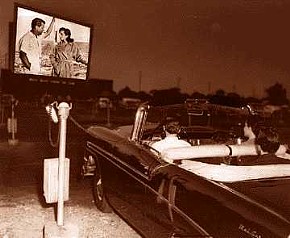
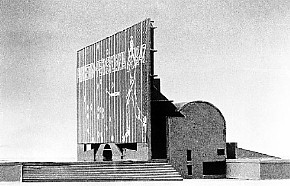
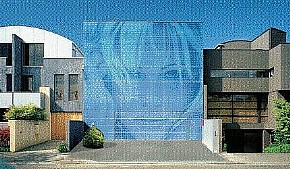
Frohe Weihnachten!
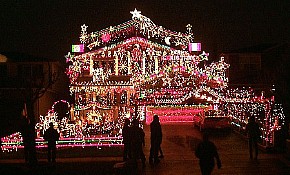
| |
2007.10.26 16:26
Collage Architecture
It's interesting how Robert Venturi's collage perspective of the National Collegiate Football Hall of Fame (1967)
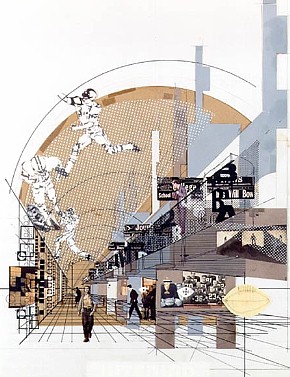
predates Archigram's Instant City (1968) by one year.
One could say that Venturi's collage is an updated POP...
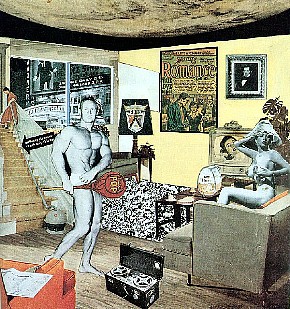
...version of the earlier collages by Mies van der Rohe.
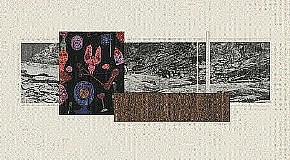
MoMA
| |
2012.02.20 12:00
an architecture of memory lane

Eisenhower Memorial, Washington D.C., 2012
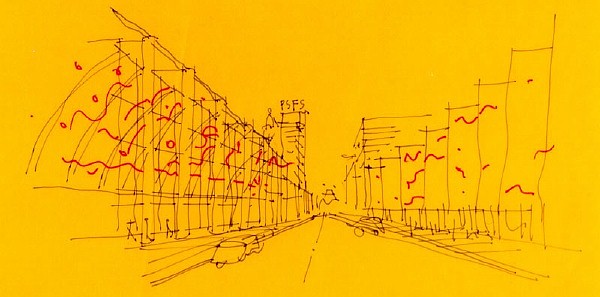
Gateway Visitor Center and Independence Mall, Philadelphia, PA, 1996
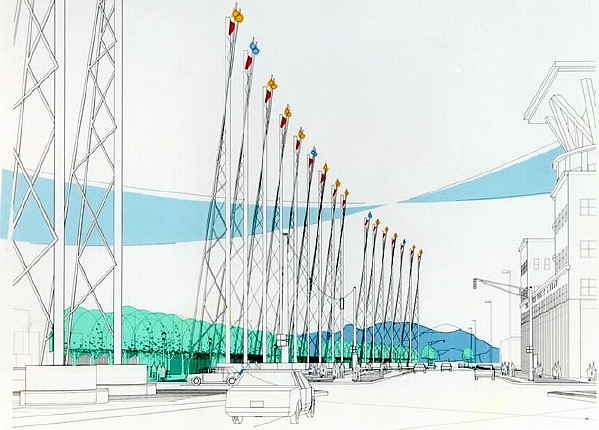
Denver Civic Center Cultural Complex, CO, 1991-95
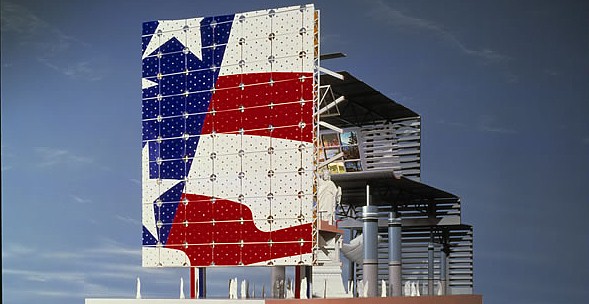
US Pavilion Expo '92, Seville, Spain, 1989-92
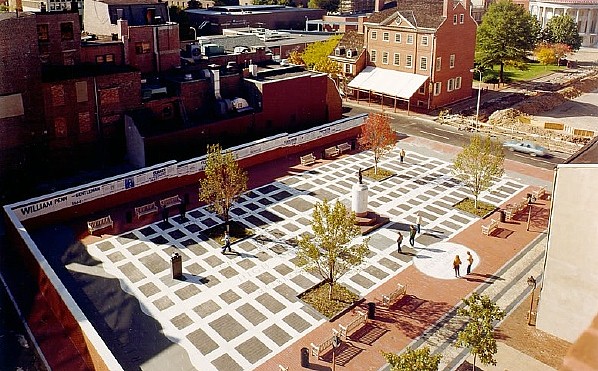
Welcome Park, Philadelphia, PA, 1982
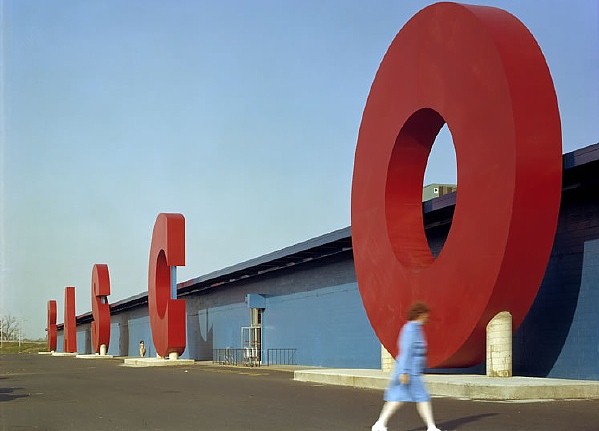
BASCO Showroom, Philadelphia, PA, 1979
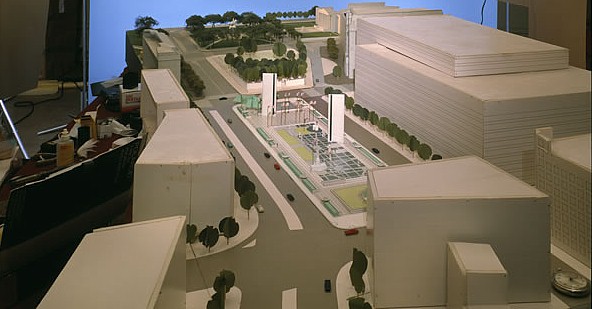
Pennsylvania Avenue Development Corporation, Washington, D.C., 1978
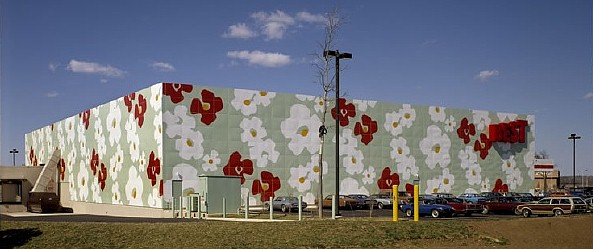
Best Products Catalog Showroom, Oxford Valley, PA, 1978

Bicentennial Exhibition, Philadelphia, 1972
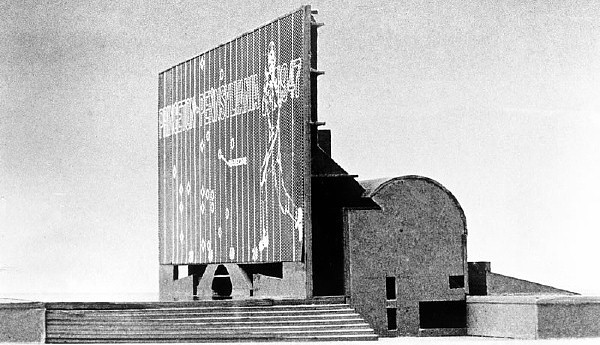 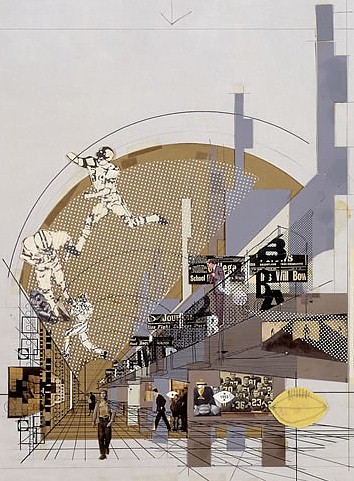
National Collegiate Football Hall of Fame (Competition), 1967
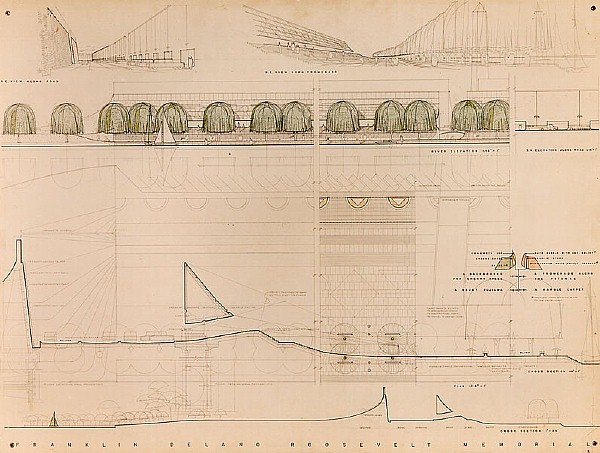
FDR Memorial Park Competition, Washington, D.C., 1960
| |
|


















